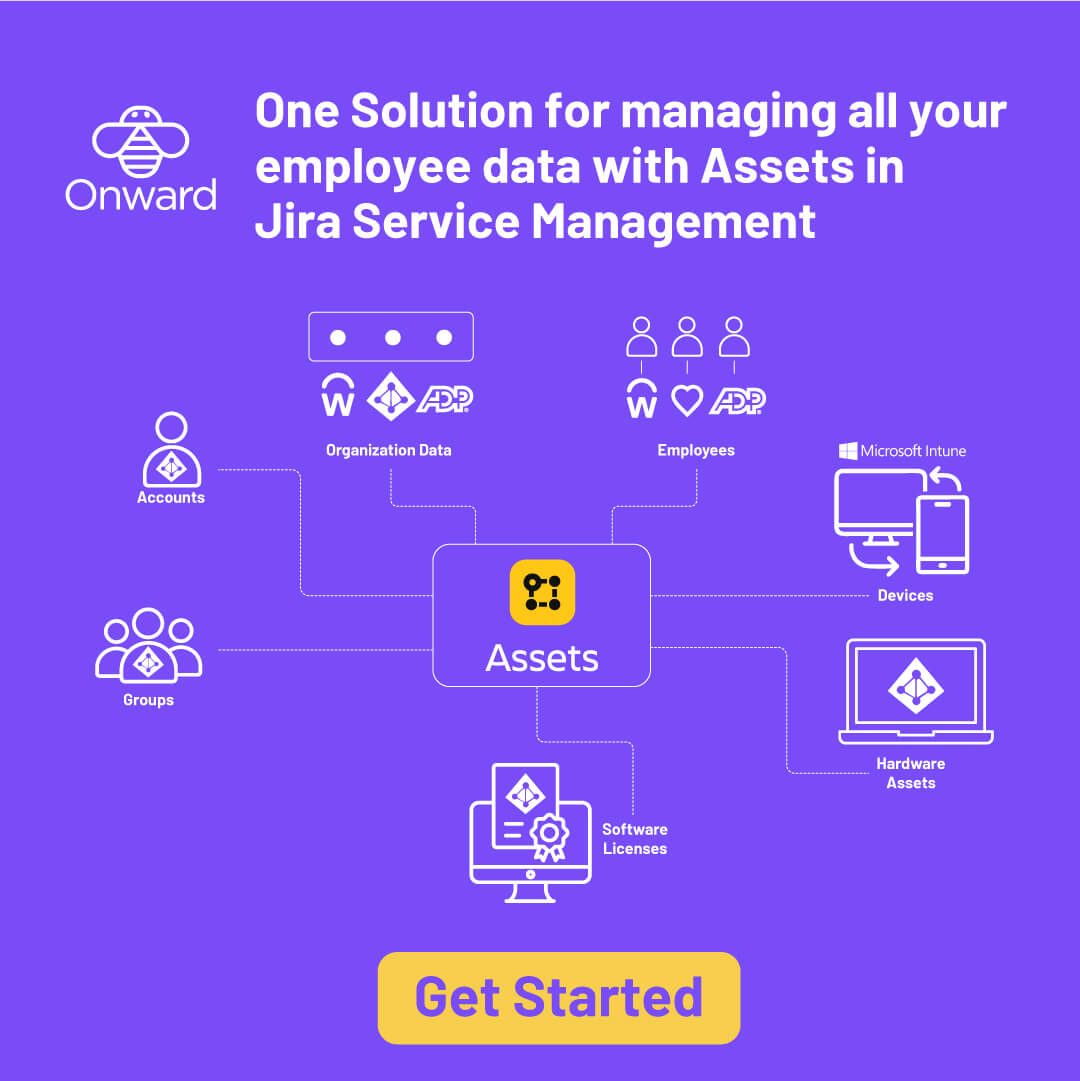
As organizations modernize their operations, many overlook a powerful capability within Jira Service Management (JSM): Assets. While traditionally seen as an ITSM function for managing hardware and software, Assets plays a pivotal role in deploying a modern HR Service Management (HRSM).
In this blog, we’ll explore how Assets can be applied to HR use cases, how to structure employee and identity data, and how having HR data in Assets can supercharge automation and employee experience.
Pro tip: If you’re not yet using Assets, make it a priority for H2 2025. Once you see what’s possible, you’ll wonder how HR Service Management ever worked without it.
Many organizations already rely on JSM for ITSM. By having HR data in Assets can support both ITSM and HRSM use cases.
Common HRSM Use Cases Enabled by Assets:
Onboarding & Offboarding
Trigger checklists, provisioning, approvals, and device assignments based on employee attributes.
Employee Change Management
Automate tasks for role/title/location changes, and notify impacted stakeholders.
Leave Requests & Approvals
Use employee-manager relationships in Assets to auto-route approval flows.
Access & Entitlement Management
Manage group memberships, software licenses, and permissions based on job role.
Employee Lookup & Ticket Routing
Route requests to correct queues (e.g. by location, department) and enable HR agents to look up employee records in context.
Start by importing your employee data from your HRIS into Assets. Each employee becomes an object that can power automation, ticket context, and workflow logic.
Suggested Attributes for the Employee Object
Employee Name
Hire Date
Department
Cost Center
Title
Location
Manager Name
Email Address
Employee ID
Employment Type
Employment Status
Termination Date
Pro tip: Use references to link departments, locations, and managers to other object types. Map employees to Jira users for advanced user assignments.
Key Benefits of Using Employee Data in Assets
Smarter ticket routing based on up-to-date HRIS attributes
Automation triggers on key changes (e.g. title or location updates)
Approval routing based on reporting structure
Data consistency across onboarding/offboarding workflows
Improved agent experience with centralized employee profiles
Use OnLink to automate data sync and eliminate manual CSV uploads:
(For the complete integration list, visit this link.)
Step 2: Import Identity Manager Data into Assets
To support access and entitlement workflows, you’ll want to import data from your Identity Provider (IdP) or access management systems.
Username / UPN
Employee ID (for reference)
Linked Jira User
Status (Active/Disabled)
Associated Groups/Roles
Pro tip: You can use one employee object that has both HR data and Identity manager data. Please ensure you have unique identifiers that map to HRIS and Identity Manager. OnLink supports synchronization to one Employee schema from multiple sources.
Group Name
Description
Group Type (e.g., Security, Distribution, Dynamic)
Linked Systems (e.g., AD, Okta)
Auto-provision Rules
Role Name
Business Unit or Department
Level (e.g., Manager, Analyst, Intern)
Default Group Assignments
Required Licenses
License Object
Software/Product Name
License Type (Named, Concurrent, Enterprise)
Expiration Date
Assigned To
Cost Center
Benefits of Using Identity & Access Data in Assets
Automated provisioning of access and software based on role or department
Streamlined approvals for license or group requests
Access reviews made easier by referencing Asset data in workflows
Termination workflows that revoke access and remove group assignments automatically
(For the complete integration list, visit this link.)
Enterprises using CDW for IT procurement can auto-update Assets when devices are provisioned, using webhook events. Documentation Link.
Intune to Assets
With OnLink, Intune device data can be imported to Assets without any on-prem connectors. Fully cloud-native. Documentation Link.
For Apple-centric environments, Kandji data provides rich visibility into Mac devices, synced directly into Assets. Documentation Link.
Import devices, applications, users and other attributes from Jamf to JSM Assets. Documentation Link.
One App for All HRSM Asset Integrations
You don’t need middleware, multiple marketplace apps, or DIY scripts. You may find multiple solutions and ways to do synchronize with assets but OnLink enables you to bring together all in ONE application. yes ONE.
HRIS data (Workday, BambooHR, SAP, etc.)
Identity & access data (Okta, Azure AD, etc.)
Device & procurement data (Intune, CDW, Kandji, etc.)
All flowing seamlessly into Assets, powering workflows, automation, and insight.

Assets isn’t just for IT anymore. When used thoughtfully, it will help deliver a best in class HR Service Management in JSM. Whether you’re managing onboarding, offboarding, access control, or employee changes, Assets brings structure, visibility, and automation.
If you’re ready to get started on HR Service Management in Jira Service Management, now is the time to make Assets + OnLink your new foundation. Give it a try and let us know your feedback.
RELATED
